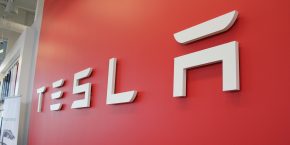Tesla’s giant Powerpack battery system in South Australia, better known as the Tesla Big Battery, has just been expanded and is showing record capacity in tests before bringing it online.
The 100 MW/129 MWh Tesla Powerpack project in South Australia provides the same grid services as peaker plants, but cheaper, quicker, and with zero emissions through its battery system.
It has proven so efficient that it reportedly should have made around $1 million in just a few days in January of 2018, but Tesla later complained that they were not being paid correctly because the system doesn’t account for how fast Tesla’s Powerpacks start discharging their power into the grid.
The system is basically a victim of its own efficiency, which the Australian Energy Market Operator (AEMO) confirmed is much more rapid, accurate, and valuable than a conventional steam turbine in a report published in 2018.
The energy storage project called ‘Hornsdale Battery’ is owned and managed by Neoen, a French energy company that also operates the adjacent wind farm.
In November of last year, they announced that Tesla would deploy more energy storage capacity at the site – expanding it by about 50%.
The expansion is adding 50 MW/64.5 MWh of capacity at the site – bringing the total to 150 MW/193.5 MWh.
The deployment was completed earlier this year and now it is being tested before going online.
Australia’s Reneweconomy reported that the battery achieved a “record flip” from charging to discharging:
“On Tuesday, in the latest series of tests, the Hornsdale battery did a rapid 270MW flip – from charging at 120MW to discharging at 150MW. It appears to have flipped between the two on several different occasions (see graph below) – at least one of which had an immediate impact on the wholesale price of electricity, pushing it down to the peppercorn price of just above $8/MWh.”
Here’s the graph in question:

With the expanded capacity, the battery is going to be able to deliver new services, like synthetic inertia, to replace services previously only provided by fossil fuel power plants.
By moving services away from fossil fuel power plants, Neoen’s Tesla big battery saved over $150 million in its first two years of operations — paying for itself.
FTC: We use income earning auto affiliate links. More.



Comments